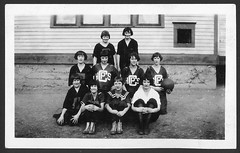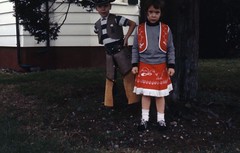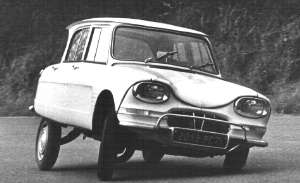 Ochres, at Jumped Up Creek, Northern Territory, Australia (from the book).
Ochres, at Jumped Up Creek, Northern Territory, Australia (from the book).- Victoria Finlay. Color: A Natural History of the Palette. New York: Random House Trade Paperbacks. 2004 [2002].
And it is new to me: I know a little art history, not too much, but I've never thought much about the technology of paint. I knew that some of them had funny names, like "burnt sienna" and "carmine lake", but I never thought about what they meant, or what the connection is between what artists do now and what they have done for millennia. Lately, as I've been thinking about aboriginal Australian art, a modern art but also the oldest art tradition on earth, the question of materials starts to appear, and I found this book fascinating.
One story that's not in here, but has echoes in the slapdash work of eighteenth-century British painter Joshua Reynolds, which is, is that of abstract expressionist Mark Rothko. I'd heard how in the forties and fifties he would dash out and buy the cheapest, nastiest paint at Woolworth's, and that now, many of these paintings had faded into uniform browns that, despite the oohs and ahs of some modern viewers, didn't reflect the color glow that he originally had in mind.
Reynolds did the same sort of thing, as told here: he used megilp, a combination of mastic (an evergreen resin) and linseed oil, to give some of his paintings a golden glow that was supposed to evoke the Old Masters, but which has darkened and degraded to the point where people now mistake it for a presage of the Impressionists.
That's just one of the stories in the "Orange" chapter. The entire spectrum is represented here, and the entire history of art, from the first ochre daubs in Australia up to modernists using acrylics colored with artificial dyes made from coal tar.
Given my recent interest, the Australian chapter, the first in the book, was the most interesting to me. Findlay traveled to the Australian outback, including some normally off-limits areas of Arnhem Land in Northern Territory, to see the traditional styles, which are still practiced. Australian rock painting forms an unbroken tradition up as long as 35,000 years in some places, but many of the sites are not historical; they are palimsests, with new paint applied every year, and on many of them you can trace a clear stylistic history all the way to the present day.
This is the question that's been driving me crazy lately, though it's mostly not in this book: how did Australian aborigines arrive at modern art without knowing anything about modern art, without working through the Western tradition that became modern art? Because aboriginal art is emphatically not primitive art, even when it's in a traditional mode, and it transferred seamlessly into a modernist idiom when acrylic paints arrived.
Traditional Australian art is done on rock with ochre. Ochre isn't a single substance, but a range of brown, red, yellow rocks that crumble easily and have the plasticity and easy drawing stroke needed to paint with directly. You just pick up the rock and rub; or you grind it up, and make a paint, or take it in your mouth and spray over a stencil, such as your hand -- a technique used by the Mayans in Central America as well as the Australians. Ochres are found on every continent, but their most developed use is in Australia. Traditional painting is done on bark as well, and much of this work is modern (though in a traditional vein) -- because barks, and canvases, can be carried away by paying customers.
The process by which the aboriginal peoples were introduced to the possibilities of commercial art, and modern materials, like most dealings between the whites and aborigines, is immensely painful to read. The most horrific story, and an act of cultural and artistic vandalism as brutal as the destruction of the enormous Buddhas at Bamiyan, Afghanistan by the Taliban, is the story of the Honey Ant Dreaming at Papunya, in the central desert west of Alice Springs. There, a white man named Geoffrey Bardon taught the locals how to use acrylics, and how, haltingly at first, to find and express their own voice while still using the language of their tribe and ancestors. It is in cultural collisions like this that the modern world is invented.
The elders of the tribe took this new possibility and offered to paint one of their Dreamings on the concrete wall of the school. This was momentous: never before had the black men used the white tools to tell their story, on an equal footing: for the white man to see, but with equal meaning for the black men. The first version of this painting, the Honey Ant Dreaming, was after its completion deemed by the elders to be too revealing; too many secrets were shown. They painted it again. This time, Geoffrey Bardon said no, it has too much of the whitefella in it. They painted it again.
It was probably the first time that symbols had been deliberately swapped in order to show the "blanket" and yet keep the secretes that lay beneath it. In a way it marked the beginning of these dispossessed people finding a way of representing what was esoteric by something that was exoteric -- something that was hidden by something that could be shown.
It was an amazing act of generosity for these men to paint their Dreaming -- the representation of their layered system of knowledge -- on the walls of a whitefellow building, Bardon said. "But few people really appreciated it. Nobody cared what they were doing." In those days he used to joke that with the industrial-strength glue he had provided to bind the colored poster paint, the Honey Ant Dreaming would last a thousand years. But it didn't, it lasted only until 1974, when a maintenance man, on someone's orders, painted over it with acrylics. If it existed today it would be one of Australia's greatest works of art.
In addition to destroying their masterpiece, the whitefellow overlords started to steal their money, taking the proceeds from sales back in Alice Springs before the artists could get their hands on it.
Not every story in this book breaks your heart. Some of it is just weird, like the manufacture of carmine red from crushed cochineal insects living on a particular Mexican cactus; some of it is exciting, like the discovery of the secret of Chinese celadon in sealed-off caves. Saffron yellow, from the stamens of flowers, was once a mainstay of Spanish agriculture, but is now mostly grown in Iran. Findlay visited the fields there, and she went to Afghanistan, where she saw the Bamiyan Buddhas and visited the lapis lazuli mines, still today the source of almost all of this beautiful blue stone, which is ground into ultramarine pigment. Along the way we meet Antonio Stradivari and Michelangelo, shell-divers in Mexico and Lebanon (for their purple), indigo farmers and the stained glass masters who worked in the great medieval cathedrals of Europe.
I'm a bit obsessed with the Australian chapter, but it's a small part of the book. The entire history of art is in here, in terms of the materials they used. It's beautifully written, and works as art history, cultural history, history of technology, and travelogue. I loved it.





















